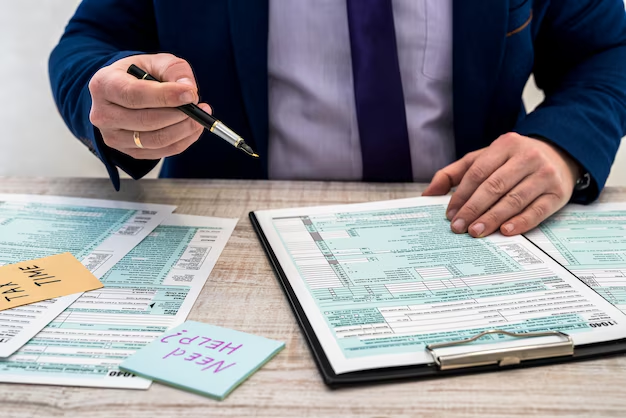How to Obtain Your IRS Form 1040: An In-Depth Guide for Taxpayers
Filing taxes can often feel daunting, but one document that simplifies the process is the Form 1040. Recognized as the main form used by taxpayers in the United States to file their annual income tax returns, obtaining and understanding it is crucial. This guide aims to demystify where and how you can get a 1040 form, while providing comprehensive insights into related aspects of tax filing. Let’s dive into a detailed exploration of Form 1040, ensuring you are well-prepared for tax season.
📜 What is Form 1040 and Why is It Important?
Form 1040, also known as the U.S. Individual Income Tax Return, is a standard form used by individuals to report their income to the Internal Revenue Service (IRS). It calculates the amount of tax owed or the refund due for the year. While there are variations like the 1040A or 1040EZ forms for simpler returns, Form 1040 is the full-length option used by taxpayers with more complex financial situations.
Why You Need Form 1040
- Comprehensive Reporting: It captures a complete overview of your financial activities, ensuring every source of income is reported.
- Legal Requirement: Filing it fulfills your obligation under U.S. tax law.
- Eligibility for Deductions: The form allows you to claim deductions and credits which can reduce your taxable income and overall tax bill.
🏦 Where to Obtain Your Form 1040
Obtaining Form 1040 is a straightforward process. Here’s a guide on the various methods available:
1. IRS Website
The simplest and most direct way to obtain Form 1040 is through the IRS website. The form is available as a free download, and you can print it at home. This method ensures you are using the most current version of the form.
2. Local IRS Offices
For those who prefer obtaining a hard copy, your local IRS office is a reliable source. Many community centers or libraries also keep IRS forms during tax season.
3. Mail Request
If visiting a location or downloading online isn’t feasible, you can request the IRS to mail you a form. Calling the IRS directly or using their online ordering tool allows you to receive forms directly to your home.
4. Tax Software
Most tax preparation software includes Form 1040 as part of their services. These platforms guide you through filling out your form digitally and usually offer e-filing options.
5. Tax Professionals
Hiring a tax professional can also make obtaining and filing your 1040 easier. These experts not only provide the necessary forms but also ensure they are completed accurately.
🎯 Steps to Filling Out Form 1040
Once you have your form, understanding how to complete it is essential. Let’s outline the key sections and the information needed:
Personal Information
Begin by filling out your personal details including your name, Social Security number, and any dependents you might claim. Accuracy here is crucial to ensure your filing is accepted without delays.
Income Lines
This section includes all sources of income such as wages, dividends, business earnings, and rental income. Take time to compile accurate records and documentation for every income source to prevent errors or omissions.
Deductions and Adjustments
You’ll need to detail any deductions you’re eligible for, such as student loan interest or educational expenses. This section is vital for reducing taxable income, so consulting a tax advisor for eligibility might be beneficial.
Tax Credits
Credits differ from deductions as they reduce the tax owed rather than taxable income. Common credits include child tax credits and education credits. Ensure you understand each credit to maximize potential returns.
Payment and Refund
Finally, calculate whether you owe taxes or are due a refund. This part needs careful attention to detail to avoid overpayment or underpayment.
✍️ Tips for a Smooth Filing Process
Filing taxes isn’t a favorite pastime for most, but these handy tips can make it less of a headache:
- Start Early: Giving yourself ample time to gather all necessary documents prevents last-minute stress.
- Keep Records: Organize all tax-related documents like W-2s, interest statements, and receipts for deductions.
- Check for Updates: Tax laws can change annually. Always use the current year’s form and instructions.
- Double-Check Entries: Mistakes can delay returns or trigger audits. Review all entries for accuracy.
- Consider E-filing: It’s faster, more secure, and receives confirmations when submitted correctly.
📑 Visual Summary
Here’s a quick checklist to help you secure and file your Form 1040:
- 🌐 Download from the IRS: Visit the IRS.gov for the latest form.
- 🏢 Visit Local Libraries: Many public places stock forms during tax season.
- 📧 Mail Request: Directly request forms via the IRS call line.
- 💻 Use Tax Software: For quick, guided preparation.
- 👨💼 Hire Professionals: For complex tax situations requiring expert insight.
Approaching tax season with a plan and understanding of Form 1040 will alleviate common stressors associated with filing returns. By starting early and using reliable resources, you'll not only meet your obligations but potentially receive any tax benefits you’re entitled to. Preparing with diligence today guarantees peace of mind tomorrow when deadlines approach and ensures compliance with IRS rules. Happy filing! 🎉
